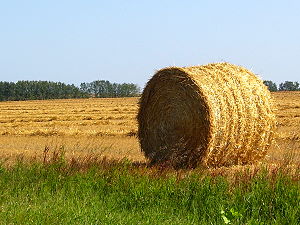 Northwest Region Crop Report Prepared by: Manitoba Agriculture
Northwest Region Crop Report Prepared by: Manitoba Agriculture
October 5, 2021 |
Northwest Region
Continued warm, dry weather has helped harvest move towards completion. Minimal precipitation fell in the areas of Laurier and Ste. Rose, while the rest of the region saw no rain. Some areas experienced light frosts for a couple of mornings with Minitonas (-1.3°C) and Rorketon (-1.2°C) recorded.
Post-harvest field work has been occurring in some areas of the region while some are holding off due to dry conditions. Post harvest weed control has also occurred where conditions and stages have allowed. No fall anhydrous ammonia applications have occurred as of yet due to recent warm temperatures.
Field peas and spring wheat harvest is complete across the region. Some oats and barley remain standing and ready for harvest.
Canola harvest is nearing completion with most of the region at 98% harvested. Most fields that are left standing have been later-seeded/germinated. Yields in the Swan Valley in poorer crops are approximately 15 to 25 bu/ac and better crops yielding 45 to 50 bu/ac; yields in Roblin approx. 35 bu/ac and Dauphin at 25 bu/ac and upwards to 55 bu/ac in better fields.
Soybean harvest continues across the region and about 85 to 90% complete in the Swan Valley with yields of 25 to 40 bu/ac across the region.
Some flax has been harvested in Roblin however some of the flax fields have started to flower again with previous rains.
Producers who are still contemplating taking a second cut but waiting for a killing frost in order to reduce the risk of winter kill, may be running out of favourable weather conditions to put up dry hay. It is anticipated that fields may be grazed instead if they are fenced and have sufficient water available. Grazing is occurring on annual crop regrowth such as canola fields and on ground where corn silage was harvested. Pastures have held out but are now going into dormancy with the cooler nights. Light frost has been reported in localized areas. Water supplies on pastures are poor and require a significant recharge for next season’s grazing.
